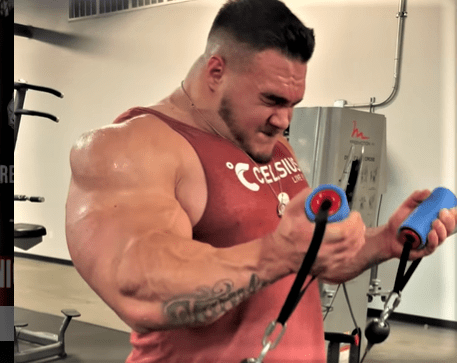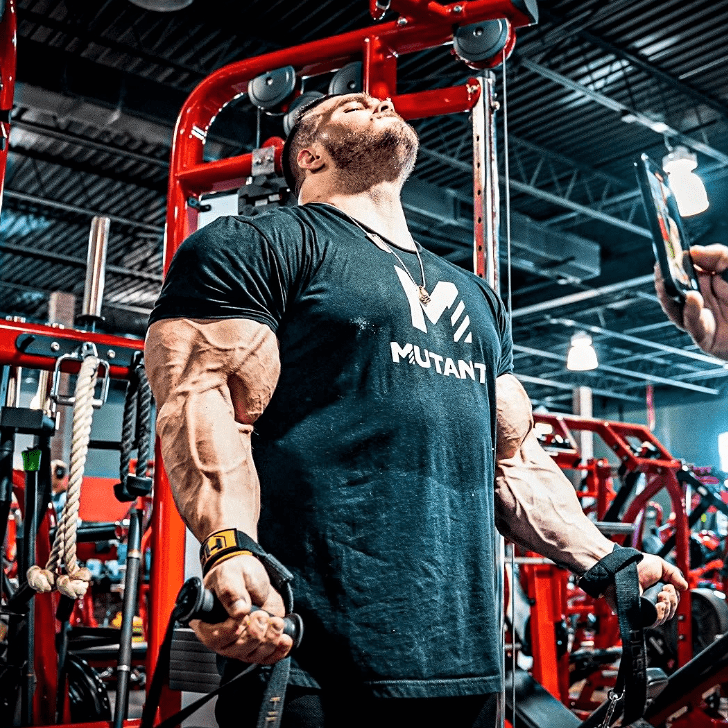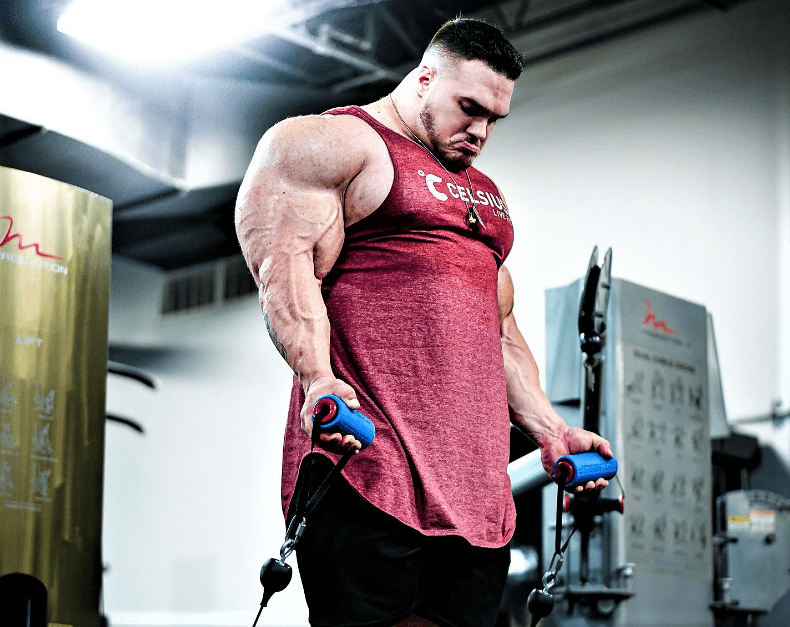Nick Walker is on a quest to win the 2022 Mr. Olympia after finishing fifth last year. The self-proclaimed “Mutant” is one of the most active pro bodybuilders on social media, regularly sharing workouts and clips on YouTube and Instagram. Amongst all the heavy-metal, free-weight exercises, like incline pressing 200-lb. dumbbells, is a not-so-mutant one that’s always in his biceps routine: the cable curl. He does this bilateral with separate low cables on a Free Motion Lift machine, typically, for 4 sets of 12-15 reps. This machine allows him to move his arms independently and rotate his wrists. Nick Walker recently called this cable curl his favorite biceps exercise.
There are no heavy barbell or dumbbell curls in Walker’s biceps routine. Instead, he favors 12-15 reps, slow controlled reps, and holding contractions. And in addition to cable curls, he’ll often do machine curls. He does curl free-weights—21-curls (with an EZ-curl bar) and seated dumbbell curls are two favorites—but in multiple biceps workouts which we observed, Nick Walker did cable curls first. He frequently does drop sets when doing cable curls.
There are the three primary reasons why cable curls are Nick Walker’s favorite biceps exercise, and why you, like the Mutant, should include some kind of cable curl in your biceps routine.
WHY CABLE CURLS? JOINT & MUSCLE COMFORT
“I like the cable curls because it takes all the tension out of the elbow joints. If you have any elbow pain, you really won’t feel it. And any type of forearm pain, again, you probably won’t feel it,” Walker said. Though he currently has no such pain, making cable curls the cornerstone of his biceps routine helps him guard against nagging arm injuries. Likewise, he usually uses Fat Gripz on the handles because he believes they take unnatural pressure off his joints and forearm muscles and let him focus only on contracting his biceps.

WHY CABLE CURLS? STRONG CONTRACTIONS
Nick Walker recently wrote: “Cable curls has and will always be my favorite type of curl just for the simple fact I can contract on these the best.” He gets a full contraction on every rep, raising his hands as high as possible while keeping his elbows down, and he often holds contractions for a second or two, flexing his biceps.
WHY CABLE CURLS? VERTICAL RESISTANCE
Gravity always rules. As we discussed in this article about the best biceps exercises, when doing free-weight curls, gravity fights to pull the weight straight down to the floor, but your hands (with the weight) travel in an arc. So, it’s only when your forearms are parallel to the floor that gravity exerts its maximum pull and your biceps work their hardest. At contractions, tension is lost (especially on preacher curls).
However, with a mechanical curl, the vertical weight stack fights gravity from start to finish. The tension won’t be as great in the mid-range as with dumbbells or a barbell, but it will be greater at contractions. This is why you should include both mechanical and free-weight exercises in your biceps routine. Consider cable curls the way Nick Walker performs them: with independent cables, a slow pace, and a focus on flexing hard.

















































